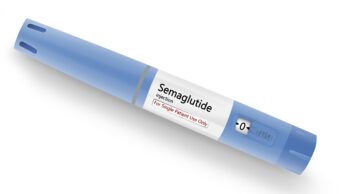
Dreamstime.com
Glucagon-like peptide 1 (GLP-1) receptor agonists are used to treat type 2 diabetes mellitus and one such agent, liraglutide, has recently been approved for use as an anti-obesity drug. Preclinical studies suggest that GLP-1 regulates bone turnover but the effect of GLP-1 receptor agonists on bone metabolism in obese patients is unknown.
Researchers studied 37 healthy obese women with a mean body mass index of 34 who followed a very-low-calorie diet for eight weeks before being randomised to receive liraglutide 1.2mg/day or not for 52 weeks. Both groups of women maintained their pre-randomisation weight loss but women in the control group experienced greater loss of bone mineral content than liraglutide-treated women, who also had increased levels of a bone formation marker.
The findings emphasise the potential of liraglutide as a “relevant and safe antiobesity drug”, say the researchers in Journal of Clinical Endocrinology & Metabolism
[1]
(online, 4 June 2015).


